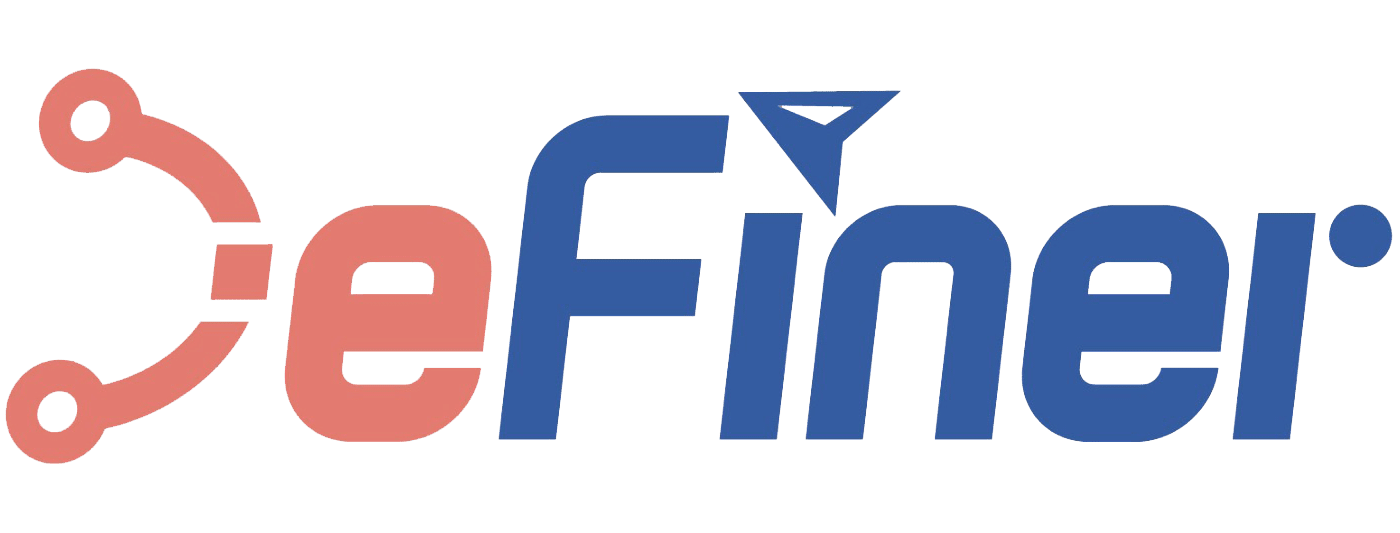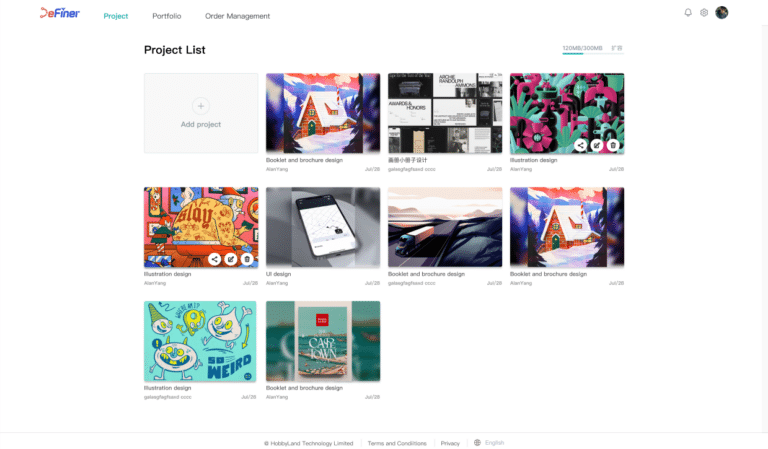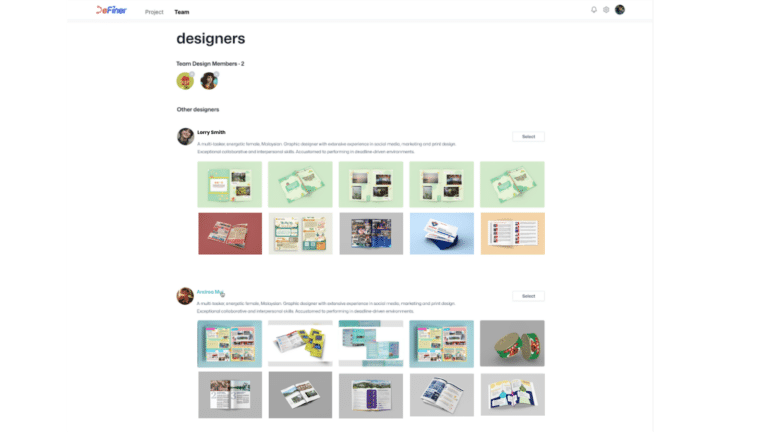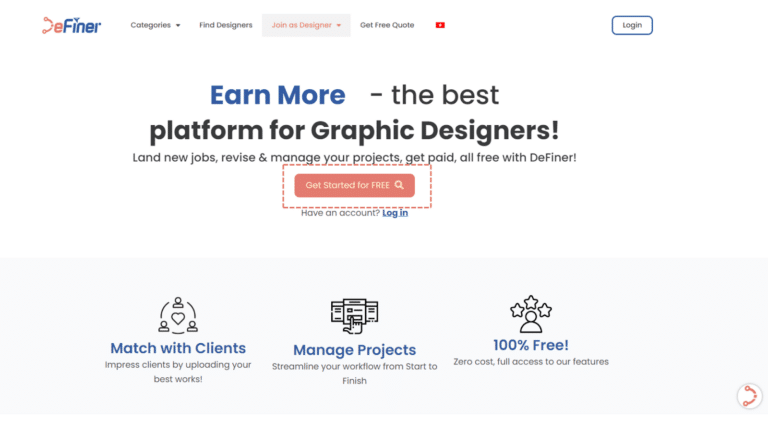Introduction
Collaboration Tool
In today’s fast-paced digital environment, seamless collaboration between designers and clients is crucial for the success of any project. Online collaboration tools have emerged as essential assets, bridging the gap between creative ideas and their execution. This article explores the top 10 online collaboration tools that empower designers and clients to communicate effectively, share feedback instantly, and streamline the design process. Whether you’re working on graphic design, web development, or any creative project, these tools can enhance your workflow and productivity.
Tool 1: DeFinerTech
DeFinerTech offers an innovative online collaboration tool designed specifically for the seamless interaction between designers and clients. This platform focuses on simplifying and accelerating the design process, offering a suite of features that facilitate efficient project management and communication. By leveraging DefinerTech’s solutions, both parties can expect significant time savings and enhanced project outcomes.
Features of DeFinerTech’s Online Collaboration Tool:
- AI-Powered Matching: Utilizes advanced algorithms to match clients with the most suitable designers, ensuring a perfect fit for every project.
- Real-Time Communication: Offers integrated messaging and feedback tools that allow for instantaneous discussions, ensuring clarity and understanding between clients and designers.
- Project Management Dashboard: A centralized space where clients and designers can track progress, review milestones, and manage tasks effectively.
- File Sharing and Revision Management: Streamlines the process of sharing designs and managing revisions, making it easy to iterate and refine concepts.
- Customizable Workflows: Tailored to suit the unique needs of each project, ensuring flexibility and efficiency in the design process.
Benefits of Using DefinerTech:
- Up to 50% Time Savings: By optimizing workflows and reducing the need for back-and-forth communications, projects can be completed faster, saving both designers and clients significant amounts of time.
- Enhanced Project Outcomes: The precision matching of clients and designers, combined with efficient collaboration, results in higher quality designs that meet or exceed expectations.
- Streamlined Processes: The all-in-one platform eliminates the need for multiple tools, making the management of design projects simpler and more straightforward.
- Increased Accessibility: Facilitates a borderless collaboration environment, enabling clients and designers to connect and work together regardless of geographical location.
- Cost-Effective Solutions: By improving process efficiency and shortening project timelines, both clients and designers can enjoy cost savings, making high-quality design more accessible.
DeFinerTech’s online collaboration tool is not just about facilitating interactions; it’s about redefining how designers and clients collaborate to create stunning, impactful designs in less time. This tool embodies the mission of making the design process more efficient and accessible.
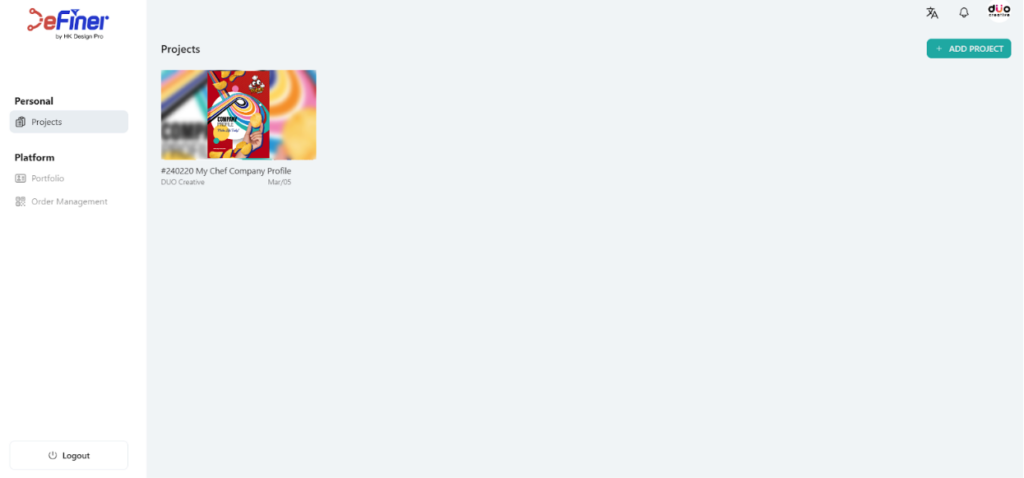
Tool 2: Slack
In the realm of online collaboration, Slack has established itself as an indispensable tool for designers and clients alike. Its intuitive interface simplifies communication by enabling the creation of dedicated channels for individual projects. This organization facilitates direct, topic-specific discussions, ensuring that conversations remain focused and productive. With Slack, sharing files is a breeze, allowing for instant feedback and revisions. This immediate exchange of ideas and documents accelerates the design process, making it more dynamic and interactive.
Moreover, Slack’s robust integration capabilities with other tools enhance its utility, allowing users to streamline their workflows. Whether it’s linking to project management software or design tools, Slack acts as a central hub for all project-related communications. This seamless integration ensures that team members have all the resources they need at their fingertips, promoting efficiency and reducing the need to switch between multiple applications.
For designers and clients striving for a harmonious collaboration experience, Slack offers the perfect blend of convenience, functionality, and speed. Its real-time messaging system not only fosters a culture of open communication but also significantly reduces the turnaround time for projects. By choosing Slack as their online collaboration tool, teams can expect a smoother, more cohesive workflow, leading to successful project outcomes.
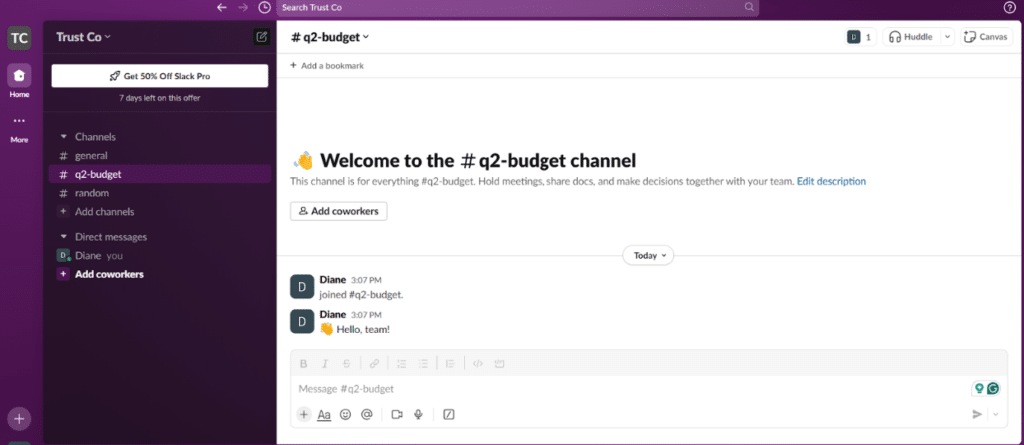
Tool 3: Trello
Trello is a versatile project management tool that empowers individuals and teams to organize their projects and tasks in a visually intuitive and flexible way. At its core, Trello utilizes boards, lists, and cards to allow users to structure their work, making it easy to manage tasks, track progress, and collaborate with team members. Each board represents a project, lists within boards represent stages or categories of tasks, and cards represent individual tasks or items.
One of the key features of Trello is its simplicity and ease of use, combined with the power to adapt to a wide range of projects and workflows. Whether you’re planning a marketing campaign, tracking a software development process, or organizing an event, Trello’s customizable setup can fit your needs. Users can add details to cards, including descriptions, checklists, attachments, deadlines, and labels, making it a comprehensive tool for task management.
Trello also supports real-time collaboration, allowing team members to comment on tasks, share files, and get instant updates on project developments. Its integration capabilities with various apps and services enhance its functionality, enabling users to automate workflows and connect their Trello boards with other tools they use.
The benefits of using Trello include improved organization, increased productivity, and enhanced communication within teams. By providing a clear visual overview of projects and tasks, Trello helps users focus on what’s important, prioritize tasks effectively, and achieve their goals efficiently.
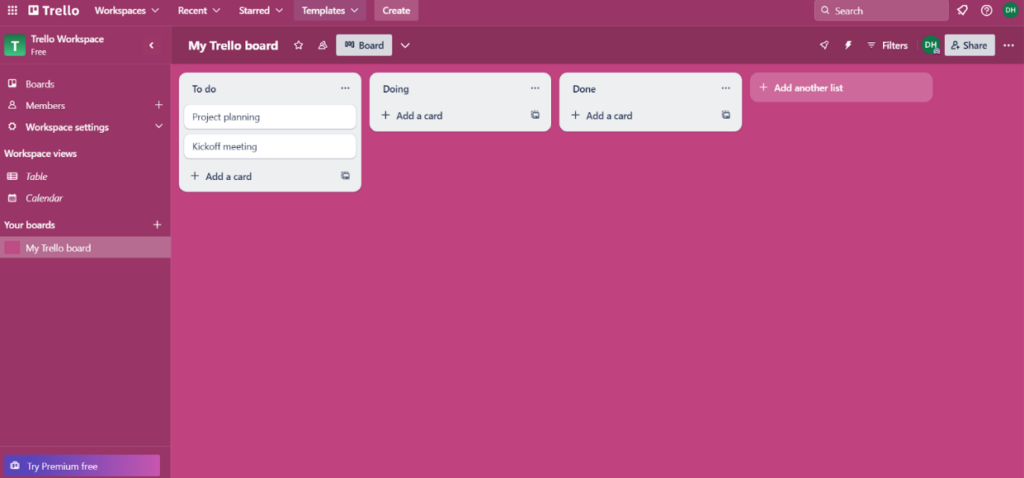
Tool 4: Asana.com
Asana is a comprehensive task and workflow management tool that streamlines the way teams work on projects. It is designed to enhance collaboration by offering a shared space where team members can plan, organize, and track the progress of their work. With Asana, users can create projects, assign tasks to individuals, set deadlines, and monitor the status of ongoing tasks, all in one place.
The platform is versatile, catering to a variety of project types and sizes, from simple to-do lists to complex workflows involving multiple teams and stages. Asana allows for the customization of workflows to suit specific project needs, ensuring that everyone on the team knows what they need to work on, when it’s due, and what comes next.
One of the key benefits of using Asana is its ability to improve communication and reduce the need for meetings and email chains. The tool integrates with various other applications, enhancing its functionality and making it a central hub for all project-related information. This integration capability ensures that teams can work more efficiently, saving time and reducing the likelihood of tasks falling through the cracks.
Asana is not just about task management; it’s about creating a more organized, transparent, and efficient work environment. By providing a clear overview of projects and tasks, it helps teams to prioritize effectively and focus on achieving their goals.
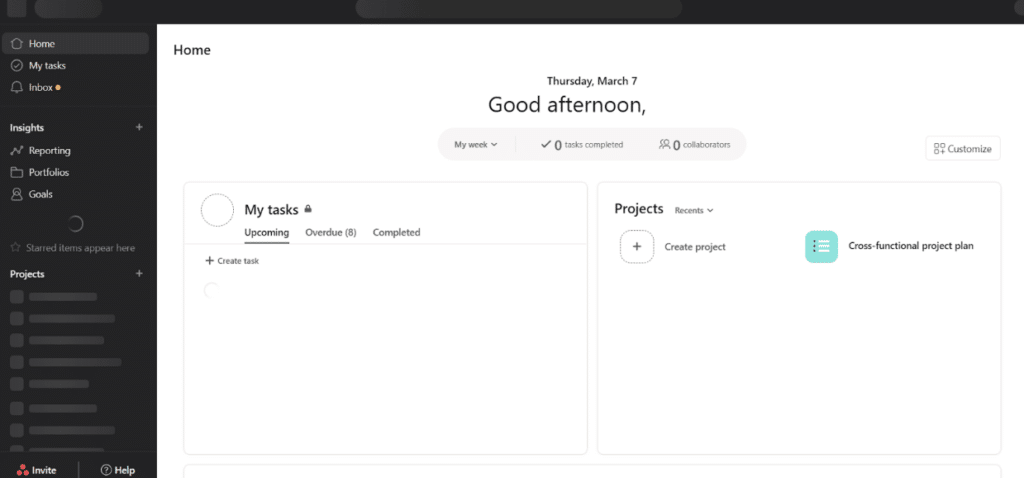
Tool 5: Figma
Figma has revolutionized the world of design by offering a cloud-based platform that supports real-time collaboration for UI/UX projects. This innovative tool stands out for its user-friendly interface and the ability to have multiple designers work on the same project simultaneously. Figma’s collaborative environment not only streamlines the design process but also enhances creativity by facilitating instant feedback and iteration.
Key features include vector networks, constraints for responsive design, and auto layout, making it easier to design complex interfaces with a high degree of precision and flexibility. Figma’s comprehensive plugin system extends its capabilities, allowing users to integrate a wide range of additional functionalities directly into their workflow.
The benefits of using Figma are manifold. It eliminates the need for back-and-forth file transfers, ensuring that everyone is always working on the latest version of a design. This seamless integration of collaboration into the design process significantly reduces project timelines and improves the overall quality of the output. Furthermore, being a web-based tool, Figma allows for easy sharing of designs with stakeholders, facilitating a more inclusive review process.
Figma is not just a tool for designers; it’s a platform that brings teams together, fostering a more collaborative and efficient approach to digital product design. Its impact on the design community is profound, making it a staple in the toolkit of modern designers around the world.
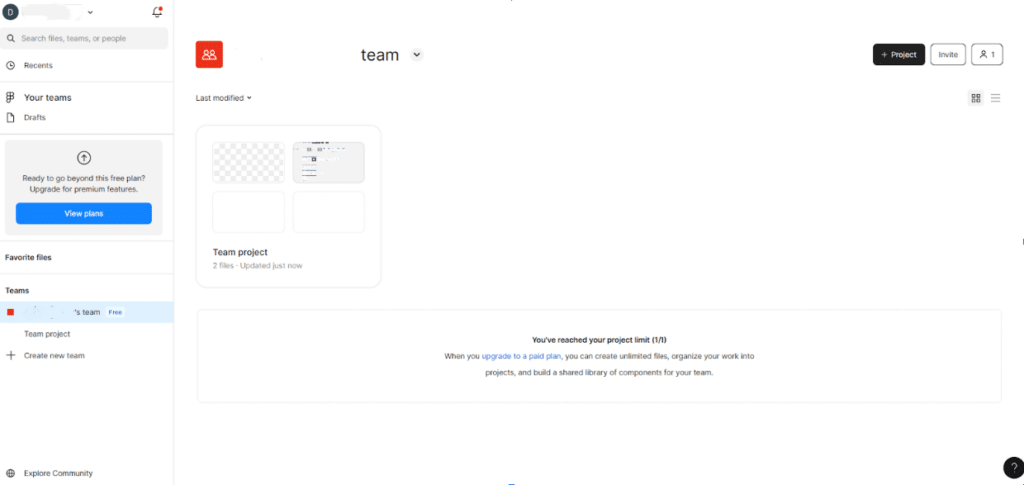
Tool 6: Adobe Creative Cloud
Adobe Creative Cloud is a comprehensive suite of over 20 desktop and mobile apps and services for photography, design, video, web, UX, and more, offering creative professionals and enthusiasts access to a plethora of tools for digital artistry, content creation, and collaboration. With Adobe Creative Cloud, users have access to industry-standard tools such as Photoshop for image editing, Illustrator for vector graphics, Premiere Pro for video editing, and Adobe XD for UX/UI design, among others.
One of the suite’s key strengths is its integration and cloud storage capabilities, which enable seamless collaboration between team members. Users can share projects, sync settings across devices, and access their work anytime, anywhere. This connectivity fosters a collaborative environment where feedback can be easily given and received in real-time, significantly streamlining the creative process.
Furthermore, Adobe Creative Cloud keeps its tools up-to-date with the latest features and improvements, ensuring that users are always equipped with the most advanced tools in the industry. Whether you’re a graphic designer, photographer, filmmaker, or web developer, Adobe Creative Cloud provides a versatile and powerful toolkit that supports the entire creative process from concept to production.
The subscription-based model offers different plans tailored to individual professionals, students, educators, and businesses, making it accessible for users with varying needs and budgets. This model ensures that creative tools are continually enhanced, providing an ever-evolving platform that adapts to new creative challenges and opportunities.
Tool 7: InVision
InVision is a cutting-edge platform designed for digital product design and prototyping, crucial for UI/UX designers aiming to bring their visions to life. It stands out by offering a comprehensive set of tools that facilitate the creation of interactive and high-fidelity prototypes, enabling designers to simulate the user experience before any code is written. This approach not only enhances the design process but also fosters collaboration between team members and stakeholders.
One of the platform’s standout features is its digital whiteboard, InVision Freehand, which supports real-time collaboration, allowing teams to brainstorm, plan, and create together, regardless of their physical location. This feature is particularly useful for remote teams or when working with clients across different geographies.
InVision also integrates seamlessly with other design tools like Sketch and Adobe XD, making it easy to import and transform static designs into clickable prototypes. Its ability to provide instant feedback and iterate quickly is invaluable, as it significantly shortens the feedback loop, enabling faster revisions and improvements to the design.
Moreover, InVision’s collaboration features extend beyond the design team. Clients can directly interact with prototypes, offering feedback at every stage of the design process. This direct line of communication ensures that the final product aligns closely with the client’s expectations and requirements.
The benefits of using InVision include improved efficiency in the design process, enhanced communication between designers, developers, and stakeholders, and the ability to test and refine concepts rapidly. By bridging the gap between design and development, InVision plays a pivotal role in creating user-centric digital products that meet the high standards of today’s digital landscape.

Tool 8: Miro
Miro is an innovative online whiteboarding tool that has become indispensable for creative teams working in today’s digital age. It serves as a versatile platform where team members can collaboratively brainstorm, plan, and visualize projects in real-time, regardless of their physical location. Miro’s expansive digital canvas allows for unlimited space to map out ideas, workflows, or project plans, making it an ideal solution for complex or creative tasks.
The platform’s intuitive design and user-friendly interface enable team members to start collaborating with minimal learning curve. Users can add sticky notes, draw, import images, and use pre-designed templates, facilitating a wide range of activities from agile sprint planning to user story mapping and design thinking sessions.
One of the key benefits of Miro is its ability to foster collaboration among distributed teams. With features like video conferencing integration, screen sharing, and real-time commenting, team members can communicate and share feedback as if they were in the same room. This not only enhances teamwork but also ensures that projects move forward more efficiently and effectively.
Moreover, Miro integrates with various tools such as Slack, Asana, Jira, and more, streamlining workflows and keeping all project-related information in one accessible location. This integration capability ensures that Miro fits seamlessly into existing work ecosystems, enhancing productivity without disrupting established processes.
In summary, Miro is more than just a digital whiteboard; it’s a comprehensive collaboration platform that empowers creative teams to bring their ideas to life in a dynamic, interactive, and efficient manner. Its ability to support a wide range of use cases and integrate with other tools makes it a valuable asset for any team looking to enhance their collaborative efforts.

Tool 9: Dropbox Paper
Dropbox Paper is a dynamic and collaborative workspace designed to facilitate seamless cooperation within teams. It acts as a centralized platform where users can create, edit, and share documents in real-time, fostering a highly interactive environment for brainstorming, project planning, and feedback gathering. Its simplicity and effectiveness in document collaboration stem from its user-friendly interface and comprehensive set of features that cater to a wide array of needs.
Key features include the ability to embed media (images, videos, and links), create to-do lists, and comment directly on specific parts of a document, which enhances clarity and ensures that feedback is precise and actionable. Dropbox Paper also supports real-time editing and commenting, making it an ideal tool for teams looking to work together dynamically and efficiently.
The benefit of using Dropbox Paper lies in its ability to streamline the workflow process, reduce email clutter by centralizing communication, and foster a collaborative spirit by allowing team members to contribute openly and creatively. Additionally, its integration with Dropbox means that users can easily access and share files stored in Dropbox without leaving the Paper environment, further enhancing its utility as a tool for comprehensive project management and collaboration.
Whether for drafting initial designs, sharing ideas, or gathering feedback, Dropbox Paper offers a simple yet effective solution for document collaboration, making it a valuable tool for teams of all sizes.

Tool 10: Microsoft Teams
Microsoft Teams is a comprehensive collaboration suite designed to enhance productivity and streamline communication within organizations. As a part of the Microsoft ecosystem, it integrates seamlessly with Office 365 applications, making it an ideal solution for businesses looking for a unified platform for chats, video meetings, file storage, and collaboration.
Key Features of Microsoft Teams include:
- Real-time Chat and Communication: Facilitates instant messaging and group chats, allowing team members to communicate efficiently without the need for lengthy email threads.
- Video Conferencing: Supports video calls and meetings with features like screen sharing and virtual backgrounds, enabling remote teams to collaborate effectively as if they were in the same room.
- Integrated File Storage: With Microsoft SharePoint integration, Teams offers centralized file storage, sharing, and collaboration on documents, spreadsheets, and presentations.
- Customizable Workspaces: Teams can customize their workspace with tabs, connectors, and bots to include the tools and services they use every day, enhancing workflow and productivity.
- Security and Compliance: Built on Microsoft’s secure infrastructure, Teams ensures data protection and compliance with industry standards, making it suitable for sensitive communications.
The benefits of using Microsoft Teams extend beyond its features. It promotes a culture of openness and transparency, where information is readily available, and decisions are made quickly. By reducing the reliance on emails and enabling more direct forms of communication, Teams helps organizations reduce silos, improve efficiency, and foster a more collaborative work environment.
For businesses already invested in the Microsoft ecosystem, Teams provides a valuable addition to their productivity tools, enhancing collaboration and communication across departments and with external partners. Its integration with Office 365 applications ensures a seamless user experience, making it easier for teams to adopt and utilize its full range of capabilities.

Conclusion
In today’s digital age, the selection of an online collaboration tool is more than a mere choice; it’s a strategic decision that can significantly influence the outcome of design projects. As we’ve explored various tools, each with its unique set of features tailored for enhancing collaboration between designers and clients, it becomes evident that the right tool can not only streamline workflow but also amplify creativity and ensure project success.
The essence of choosing the most suitable online collaboration tool lies in understanding your project’s specific needs and collaboration style. Whether it’s real-time communication, file sharing, project management, or design prototyping, the key is to identify which tool aligns best with your objectives and working preferences.
Remember, the ultimate goal of leveraging these tools is to foster a smoother workflow, bridge the gap between ideas and execution, and create a conducive environment for creativity to flourish. By carefully selecting a tool that complements your project requirements, you can ensure a more efficient process, saving time and resources while achieving superior results.
Thus, as you navigate through the options, consider the features, benefits, and integration capabilities of each tool, and choose one that promises to enhance your collaborative efforts, driving your projects toward greater innovation and success.
This article features images from various sources, all attributed to their rightful owners.
